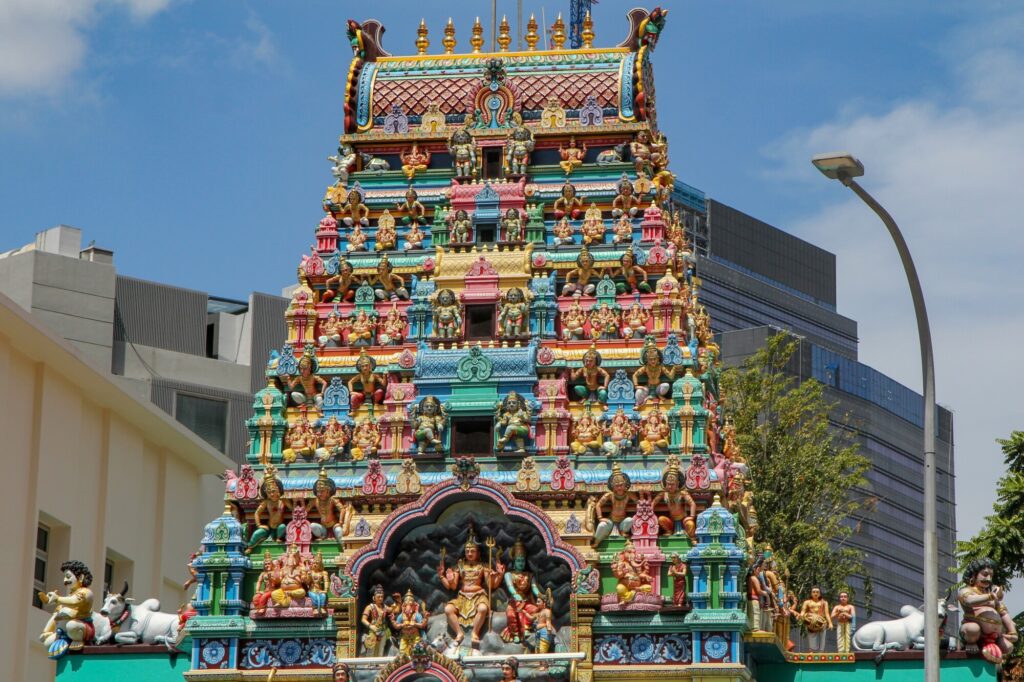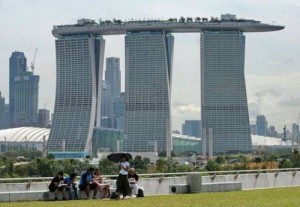SINGAPORE
TRAVEL GUIDE
Singapore, the vibrant “Lion City,” is a destination that offers an incredible blend of modern marvels, rich history, and diverse cultures. This travel guide to Singapore will help you uncover the city’s top attractions, hidden gems, and must-know tips to make the most of your visit. From iconic landmarks like Marina Bay Sands and Gardens by the Bay to bustling hawker centers serving world-class cuisine, discover why Singapore is a traveler’s dream. Let’s dive into this ultimate guide!
Singapore Itineraries
Need To Know: How To Travel To Singapore
Singapore is a captivating destination known for its stunning architecture, lush green spaces, and world-class attractions. Its unique blend of cultures offers diverse cuisines, vibrant festivals, and rich history. With efficient public transport, modern amenities, and a safe environment, Singapore promises an unforgettable experience for every traveler.
Whether you need a visa to visit Singapore depends on your nationality. Many countries enjoy visa-free entry for short stays, while others require a visa or electronic visa (e-visa). Ensure your passport is valid for at least six months. Check Singapore’s official immigration website for specific requirements before traveling.
The currency of Singapore is the Singapore Dollar, abbreviated as SGD or represented by the symbol $. It is further divided into 100 cents. Notes come in denominations ranging from $2 to $1,000, while coins range from 5 cents to $1. The SGD is widely used and highly stable.
Singapore can be expensive, but it offers budget-friendly options for savvy travelers. Affordable hawker centers, free attractions like Marina Bay’s light show, and efficient public transport help keep costs low. While luxury experiences abound, careful planning lets you enjoy Singapore’s highlights without breaking the bank, making it accessible for various budgets.
Yes, Singapore is one of the safest countries to travel to, with low crime rates and a highly efficient law enforcement system. Its clean streets, reliable public transport, and strict regulations contribute to a secure environment. Travelers should still exercise basic precautions, such as safeguarding belongings in crowded areas.
Yes, you can drink tap water in Singapore as it meets World Health Organization safety standards. The water is rigorously treated and monitored, making it safe and clean for consumption. Many locals and tourists drink it directly, reducing the need for bottled water and promoting environmentally friendly practices.
Singapore’s traditional food reflects its multicultural heritage, blending Malay, Chinese, Indian, and Peranakan influences. Iconic dishes include Hainanese Chicken Rice, Laksa, Chili Crab, Satay, Roti Prata, and Nasi Lemak. Found in vibrant hawker centers, these flavorful dishes showcase aromatic spices, fresh ingredients, and the city’s love for bold, hearty flavors.
Singapore Snapshot: How To Travel To Singapore
Singapore Travel Guide
Introduction
Welcome to the ultimate Singapore Travel Guide, your go-to resource for everything you need to know about this dynamic and captivating city-state. Singapore is a blend of futuristic architecture, rich history, and vibrant culture, making it one of the most sought-after travel destinations in the world. Whether you’re planning a quick stopover or a long vacation, Singapore has something to offer for everyone.
From the iconic Marina Bay Sands to the lush greenery of the Botanic Gardens, Singapore’s attractions are diverse and exciting. Beyond its physical beauty, the city is also a melting pot of cultures, cuisines, and traditions that create a unique travel experience. In this guide, we’ll walk you through everything you need to know to make your trip to Singapore unforgettable.
History of Singapore
The history of Singapore is a story of transformation. Originally a quiet fishing village, Singapore grew into a major trading port under British colonial rule in the 19th century. Its strategic location on key shipping routes made it a hub for global trade. This Singapore Travel Guide explores how the city’s colonial past shaped its architecture and culture, visible in landmarks like the Raffles Hotel and Fort Canning Park.
After World War II, Singapore faced significant challenges, including economic struggles and political uncertainty. However, its independence in 1965 marked a turning point. Under visionary leadership, Singapore underwent rapid development, becoming a global economic powerhouse. Today, it is celebrated for its innovation, multicultural society, and strong national identity. Dive into Singapore’s museums and historical sites to gain a deeper appreciation of this incredible journey.
Why Travel to Singapore
Why should Singapore be on your travel bucket list? This Singapore Travel Guide highlights the city’s unique allure. Singapore offers a rare combination of cutting-edge modernity and deeply rooted traditions. Its skyline is dominated by architectural marvels like Marina Bay Sands and the Esplanade, while neighborhoods like Chinatown and Little India provide a glimpse into its multicultural heritage.
Singapore is also a haven for food lovers, with its diverse culinary offerings that range from Michelin-starred fine dining to humble hawker stalls. For nature enthusiasts, the city’s commitment to green spaces is evident in attractions like Gardens by the Bay and the Southern Ridges. Add to this the city’s impeccable cleanliness, safety, and efficiency, and you have the perfect destination for any type of traveler.
Planning Your Trip to Singapore
Planning your trip to Singapore is an exciting part of your journey. This Singapore Travel Guide recommends starting with deciding the best time to visit. While Singapore’s tropical climate means warm and humid weather year-round, certain months offer unique experiences. For instance, visiting during the Great Singapore Sale in June or Chinese New Year in January adds a festive touch to your trip.
Accommodation options in Singapore cater to every budget, from luxury hotels like Marina Bay Sands to budget-friendly hostels in vibrant neighborhoods. When planning your itinerary, consider must-see attractions such as Sentosa Island, Universal Studios Singapore, and the Singapore Zoo. Don’t forget to include time for exploring local neighborhoods, sampling street food, and shopping. With proper planning, your Singapore adventure will be smooth and memorable.
How to Get to Singapore
Getting to Singapore is straightforward thanks to its world-class Changi Airport, often ranked as the best airport globally. This Singapore Travel Guide provides details on flights from major international hubs, with airlines offering both direct and connecting routes. Once you arrive at Changi, you’ll be greeted by efficient services, duty-free shopping, and even indoor gardens.
For those traveling overland, Singapore is easily accessible from Malaysia via buses or trains. Cruise travelers can dock at the Marina Bay Cruise Centre, which provides a stunning entry point to the city. No matter how you choose to arrive, Singapore’s connectivity ensures a hassle-free experience from the start of your journey.
Singapore Cuisine
Singapore’s culinary scene is one of its biggest attractions. This Singapore Travel Guide takes you through its diverse offerings, where every meal tells a story of the city’s multicultural heritage. Hawker centers like Maxwell Food Centre and Lau Pa Sat are must-visit spots to sample local dishes such as laksa, satay, and chicken rice.
Beyond street food, Singapore is also home to Michelin-starred restaurants and unique dining experiences. Try the chili crab at Jumbo Seafood or the dim sum at Tim Ho Wan. For those seeking international flavors, the city offers everything from Italian bistros to Japanese sushi bars. Whether you’re a budget traveler or a fine-dining enthusiast, Singapore’s food scene will leave you satisfied.
Culture and Religion
Singapore is a true melting pot of cultures and religions, a theme this Singapore Travel Guide explores in depth. The city-state is home to a harmonious blend of Malay, Chinese, Indian, and Western influences, reflected in its festivals, architecture, and daily life. Religious tolerance is a cornerstone of Singaporean society, with temples, mosques, and churches coexisting peacefully.
Festivals like Deepavali, Hari Raya Puasa, and Chinese New Year bring the city to life with vibrant celebrations. Visitors can also explore cultural enclaves like Kampong Glam, where the Sultan Mosque stands as a testament to Singapore’s Islamic heritage. By immersing yourself in these cultural experiences, you’ll gain a deeper appreciation of the city’s unique identity.
Safety and Dangers
Safety is a major advantage of visiting Singapore, as highlighted in this Singapore Travel Guide. With one of the lowest crime rates in the world, Singapore is an ideal destination for solo travelers and families alike. The city’s strict laws and well-maintained public spaces ensure a secure environment for all.
However, visitors should still exercise caution by staying aware of their belongings and following local regulations. Singapore’s clean and efficient public transport system further adds to the sense of safety. Familiarize yourself with local customs and avoid activities like chewing gum in public, which is prohibited. By respecting the city’s rules, you can enjoy a worry-free trip.
Getting Around
Singapore’s efficient transportation system makes getting around a breeze. This Singapore Travel Guide highlights options like the MRT (Mass Rapid Transit), which connects major attractions and neighborhoods. Affordable buses and taxis are also readily available, providing convenient alternatives for shorter distances.
For a unique travel experience, consider taking a river taxi along the Singapore River, which offers picturesque views of the city skyline. Visitors can also rent bicycles or take guided walking tours to explore specific areas. With so many transportation options, navigating Singapore is easy and enjoyable, ensuring you make the most of your time in the city.


